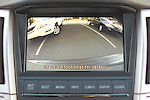Police Deny Sabotaging Plan To Get Them Off Roads
Police have rejected suggestions that the worsening traffic gridlock in Nairobi is...
Yesterday we took a look at some of the already emerged technologies cars these days have. Here we have some more fascinating stuff.
 Cameras that send an image to a dashboard-mounted screen when you shift into reverse are becoming increasingly common. Available on many cars, trucks and SUVs, these cameras add a measure of safety, particularly on larger vehicles with big blind spots. Consumer Reports testing has shown that for short drivers in some of the worst vehicles, a small child can’t be seen when less than 70 feet from the rear bumper. Cameras show what’s immediately behind the car, which also makes them handy for hooking up a trailer.
Cameras that send an image to a dashboard-mounted screen when you shift into reverse are becoming increasingly common. Available on many cars, trucks and SUVs, these cameras add a measure of safety, particularly on larger vehicles with big blind spots. Consumer Reports testing has shown that for short drivers in some of the worst vehicles, a small child can’t be seen when less than 70 feet from the rear bumper. Cameras show what’s immediately behind the car, which also makes them handy for hooking up a trailer.
The downside is that the often bundled with navigation systems can add $2,000 or more to the sticker price.
Many models are available with headlights that turn on automatically when the ambient light level drops to a preset level. They’re handy if you sometimes forget to turn on the lights, but some can be slow to come on in tunnels and parking garages, when the sky is overcast, or at dusk. They can also be operated manually.
Tires that can maintain their shape and can be driven on for 50 miles or more with no air in them are becoming increasingly common on some new vehicles. More than just a convenience item, run-flats can add a degree of security by eliminating the need to change a tire in bad weather or dangerous roadside areas. But their stiff sidewalls can make for a harsher ride. And some owners have complained of premature wear and high replacement cost.
Starting with 2008 models, all new cars will be required to have tire-pressure monitoring systems that alert drivers with a dashboard-mounted light if the air pressure in any of the tires drops below a predetermined level. Some models equipped with run-flat tire and other higher-end cars already come with these systems, which use sensors mounted on the wheel rim to monitor pressure.
 Mounted in a vehicle’s headliner above the windows, curtain airbags deploy downward in a crash to protect passengers’ heads in both front and rear seats. They also help shield occupants from flying debris, and can keep people from being ejected during a rollover. The better head-protection systems offer a safety-canopy system, which automatically deploys the side-curtain bags if the system detects that the vehicle is beginning to roll over.
Mounted in a vehicle’s headliner above the windows, curtain airbags deploy downward in a crash to protect passengers’ heads in both front and rear seats. They also help shield occupants from flying debris, and can keep people from being ejected during a rollover. The better head-protection systems offer a safety-canopy system, which automatically deploys the side-curtain bags if the system detects that the vehicle is beginning to roll over.
Offered by several automakers, adaptive cruise control takes conventional cruise control an extra step. In addition to maintaining a set speed on the highway, it automatically maintains a safe distance behind the vehicle in front by varying the speed. It does this by using radar to monitor the presence of vehicles in front and automatically eases off or tips in the throttle to slow or accelerate the car as needed.
This combination of telecommunications and computing technology is becoming more common in new cars. The widest used system is General Motors OnStar, which will soon be standard on all GM vehicles. Also marketed by Lexus, OnStar allows drivers to speak with an operator at a 24-hour call center in an emergency by simply pushing a button. If the vehicle sends a signal that it’s been involved in an accident, an operator can call to check on you. A built in microphone and the car’s stereo speakers enable the motorist to speak with the operator. Paying subscribers can also get turn-by-turn directions and other services depending on their plan.
Other manufacturers including Mercedes-Benz and Acura have their own telematics systems, able to transmit everything from service reminders to route directions.
Adopted from: www.consumerreports.org/cro/cars/new-cars/news/2007/08/new-car-technologies-8-07/overview/0708_new_car_technologies_ov.htm